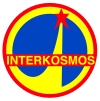Soyuz TM-6
 | |
| COSPAR ID | 1988-075A |
|---|---|
| SATCAT no. | 19443 |
| Mission duration | 114 days, 5 hours, 33 minutes, 49 seconds |
| Orbits completed | ~1,840 |
| Spacecraft properties | |
| Spacecraft | Soyuz 7K-STM No. 56 |
| Spacecraft type | Soyuz-TM |
| Manufacturer | NPO Energia |
| Launch mass | 7,070 kilograms (15,590 lb) |
| Crew | |
| Crew size | 3 |
| Launching | Vladimir Lyakhov Valeri Polyakov Abdul Mohmand |
| Landing | Vladimir Titov Musa Manarov Jean-Loup Chrétien |
| Callsign | Прото́н (Proton) |
| Start of mission | |
| Launch date | 29 August 1988, 04:23:11 (1988-08-29UTC04:23:11Z) UTC[1] |
| Rocket | Soyuz-U2 |
| Launch site | Baikonur 1/5 |
| End of mission | |
| Landing date | 21 December 1988, 09:57:00 (1988-12-21UTC09:58Z) UTC |
| Landing site | [1] 160 kilometres (99 mi) SE of Dzhezkazgan |
| Orbital parameters | |
| Reference system | Geocentric |
| Regime | Low Earth |
| Docking with Mir | |
| Docking date | 31 August 1988, 05:40:44 UTC |
| Undocking date | 21 December 1988, 02:32:54 UTC |
 Soyuz programme (Crewed missions) ← Soyuz TM-5 Soyuz TM-7 → | |
Soyuz TM-6 was a crewed Soyuz spaceflight to Mir.[2] It was launched on 29 August 1988, at 04:23:11 UTC, for the station's third long-duration expedition, Mir EO-3. The three-person crew that was launched consisted of Research Doctor Valeri Polyakov, who became part of the EO-3 crew, as well as the two crew members of the week-long mission Mir EP-3, which included the first ever Afghan cosmonaut, Abdul Ahad Mohmand.[3]
On September 8, Soyuz TM-6 was undocked from Mir's Kvant port and redocked onto the Mir Base Block's port.[4] It remained there until December, when it brought Titov and Manarov of the EO-3 crew back to Earth. It also landed French astronaut Jean-Loup Chrétien, ending his 25-day-long spaceflight which started with Soyuz TM-7.
Crew
| Position | Launching crew | Landing crew |
|---|---|---|
| Commander |  Vladimir Lyakhov Vladimir LyakhovMir EP-3 Third spaceflight |  Vladimir Titov Vladimir TitovMir EO-3 Third spaceflight |
| Research Doctor/Flight Engineer |  Valeri Polyakov Valeri PolyakovMir EO-3 / Mir EO-4 First spaceflight |  Musa Manarov Musa ManarovMir EO-3 First spaceflight |
| Research Cosmonaut |  Abdul Mohmand Abdul MohmandMir EP-3 First spaceflight |  Jean-Loup Chrétien Jean-Loup ChrétienMir Aragatz Second spaceflight |
Valeri Polyakov remained behind on Mir with cosmonauts Musa Manarov and Vladimir Titov when Mohmand and Lyakhov returned to Earth in Soyuz TM-5.
The crew of Soyuz TM-6 had a unique makeup, with a commander (Vladimir Lyakhov) who had been trained to fly a Soyuz-TM solo in the event a rescue ship needed to be sent to recover two cosmonauts from Mir, no flight engineer, and two inexperienced cosmonaut-researchers. One was Valeri Polyakov, who would remain aboard Mir with Titov and Manarov to monitor their health during the final months of their planned year-long stay. The other was Intercosmos cosmonaut Abdul Ahad Mohmand, from Afghanistan.
Mission parameters
References
- ^ a b "Mir EO-3". Encyclopedia Astronautica. Archived from the original on 29 November 2010. Retrieved 15 November 2010.
- ^ The mission report is available here: http://www.spacefacts.de/mission/english/soyuz-TM6.htm
- ^ "Spaceflight mission report: Soyuz TM-6". www.spacefacts.de. Retrieved 2023-11-19.
- ^ D.F.S.Portree (1995). "Mir Hardware Heritage" (PDF). Archived from the original (PDF) on 7 September 2009. Retrieved 15 November 2010.
- v
- t
- e
- Soyuz (rocket family)
- Soyuz (spacecraft)
- Baikonur Cosmodrome
- Soyuz abort modes
- Cosmonaut ranks and positions

(by spacecraft type)
| Soyuz 7K-OK (1966–1970) |
|
|---|---|
| Soyuz 7K-L1 (1967–1970) (Zond lunar programme) | |
| Soyuz 7K-L1E (1969–1970) | |
| Soyuz 7K-LOK (1971–1972) | |
| Soyuz 7K-OKS (1971) | |
| Soyuz 7K-T (1972–1981) | |
| Soyuz 7K-TM (1974–1976) | |
| Soyuz 7K-S (1974–1976) |
|
| Soyuz-T (1978–1986) | |
| Soyuz-TM (1986–2002) | |
| Soyuz-TMA (2002–2012) | |
| Soyuz-TMA-M (2010–2016) | |
| Soyuz MS (2016–present) |
- 2024
The † sign designates failed missions. Italics designates cancelled missions.












